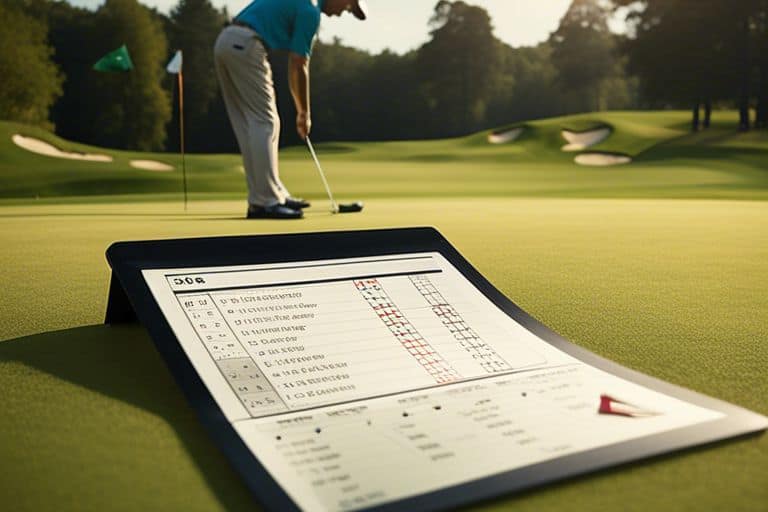How do you hit a "draw and release" shot in golf?
When I step up to the tee and want to hit a draw and release shot, there are a few key things I keep in mind. First, I adjust my stance to be slightly closed, pointing my club face slightly to the right of my target. Then, I focus on my swing path, making sure I come from the inside and release the club at impact. The key is to commit to the shot and trust that my adjustments will produce the desired result. It’s a risky shot, but when executed properly, it can make all the difference on the course.
Fundamentals of the Golf Swing
To hit a “draw and release” shot in golf, you need to have a solid understanding of the fundamentals of the golf swing. Every successful golf shot starts with a proper setup and a consistent swing motion. In this chapter, I will cover the key elements that you need to focus on to improve your golf swing and ultimately hit more accurate shots on the course.
Golf Stance and Alignment
When it comes to hitting a draw and release shot, your stance and alignment play a crucial role in setting up for a successful swing. To achieve the desired ball flight, I recommend addressing the ball with a slightly closed stance and alignment. This means that your feet, hips, and shoulders should be aligned slightly to the right of your target (for a right-handed golfer). This alignment will help promote an inside-to-outside swing path and encourage a right-to-left ball flight. It’s important to ensure that your shoulders are parallel to your target line and that your feet are positioned shoulder-width apart to provide a stable base for your swing.
Grip and Posture
In addition to your stance and alignment, the grip and posture are fundamental aspects of the golf swing that can significantly impact the outcome of your shot. When hitting a draw and release shot, I recommend maintaining a neutral grip to allow the clubface to naturally close through impact, promoting a right-to-left ball flight. Your posture should be athletic and balanced, with a slight tilt forward from the hips and a straight back. Ensure that your arms hang naturally and that your weight is distributed evenly between your feet. This setup will allow you to make a smooth, controlled rotation through impact and release the club properly to produce the desired draw shot.

Techniques for the Draw Shot
Obviously, hitting a draw shot in golf requires a specific technique to achieve the desired ball flight. There are several key aspects to consider when attempting to hit a draw, including clubface positioning, swing path mechanics, and body positioning. In this chapter, I will break down these techniques and provide tips on how to successfully execute a draw shot on the golf course.
Clubface Positioning
When it comes to hitting a draw shot, clubface positioning is crucial. In order to create the desired right-to-left ball flight, it is important to set up with a slightly closed clubface at address. This means that the clubface should be pointing slightly to the left of the target for right-handed golfers. By having the clubface closed, you are setting yourself up for a draw bias at impact, increasing the likelihood of achieving the desired shot shape.
Swing Path Mechanics
Another critical aspect of hitting a draw shot is swing path mechanics. In order to promote a right-to-left ball flight, the swing path must be from inside-out at impact. This means that the club should approach the ball from inside the target line, and then move across the ball to the right (for right-handed golfers). By swinging from the inside, you are increasing the chances of imparting a draw spin on the ball, leading to the desired shot shape.

Mastering the Release
Now that we’ve covered the basics of hitting a “draw and release” shot in golf, it’s time to focus on mastering the release. The release is a crucial part of the swing that allows you to generate the power and spin necessary to shape the shot the way you want. Properly timing and executing the release can make all the difference in the outcome of your shot.
Timing Your Release
Timing your release is essential for hitting a successful “draw and release” shot. The release should occur just before the club makes contact with the ball. This allows the clubface to close properly, imparting the desired sidespin on the ball. The key is to have a smooth and fluid release, allowing the club to accelerate through the impact zone. It’s important to practice the timing of your release to ensure consistency in your shots.
Practice Drills for Perfecting the Release
There are several practice drills that can help you perfect the release in your golf swing. One effective drill is to focus on hitting punch shots with a mid-iron. By keeping the ball low and controlling the trajectory, you can really feel the release of the club through impact. Another helpful drill is to practice swinging with just your lead arm, focusing on the extension and release of the club. These drills can help you develop a better feel for the release and improve your overall ball-striking abilities.

Advanced Tips and Common Mistakes
Despite having a good understanding of the draw and release shot, there are certain advanced tips and common mistakes to be mindful of in order to perfect your technique. Here are some important points to remember:
- Ensure proper set up and alignment
- Focus on the right grip pressure and hand position
- Maintain a smooth and consistent swing path
- Pay attention to the timing of your release
| Tip | Mistake |
| Proper set up and alignment | Poor alignment leading to a misdirected shot |
| Correct grip pressure and hand position | Over-gripping the club, leading to loss of control |
| Smooth and consistent swing path | Swinging too steep or too shallow |
| Timing of release | Releasing the club too early or too late |
Adjusting for Wind and Lie
When hitting a draw and release shot, it’s important to take into account the wind and lie of the ball. Adjusting your aim and swing to compensate for these factors can make a significant difference in the outcome of your shot. Pay attention to the wind direction and strength, as well as the lie of the ball on the ground. Make the necessary adjustments to your setup and swing to counteract these elements and achieve the desired shot shape.
Avoiding Overdraw and Other Pitfalls
One of the common mistakes in hitting a draw and release shot is overdoing it and ending up with an overdraw or hook. This can result in a shot that veers off course and gets you into trouble. To avoid this, focus on maintaining a balanced and controlled swing, and be mindful of the release timing. Additionally, pay attention to your grip pressure and hand position to prevent excessive club rotation through impact. By being mindful of these pitfalls, you can ensure a more consistent and effective draw and release shot.
Summing up
Mastering the “draw and release” shot in golf takes a combination of technique, practice, and feel. By focusing on a strong grip, a closed clubface at impact, and a slight inside-out swing path, you can generate the right amount of draw spin and release to shape your shots. It’s important to stay committed to the shot and practice it regularly to improve your feel and control. With time and effort, hitting a successful draw and release shot can become a valuable weapon in your golf game.





